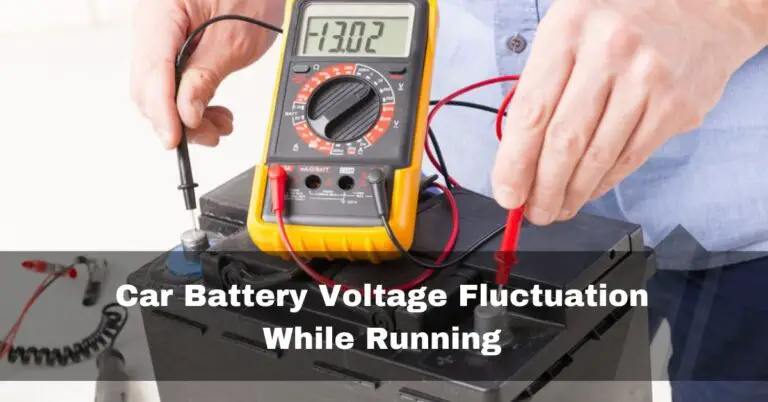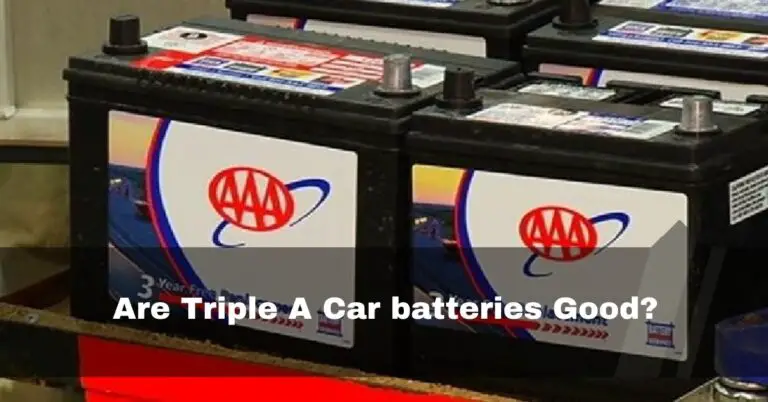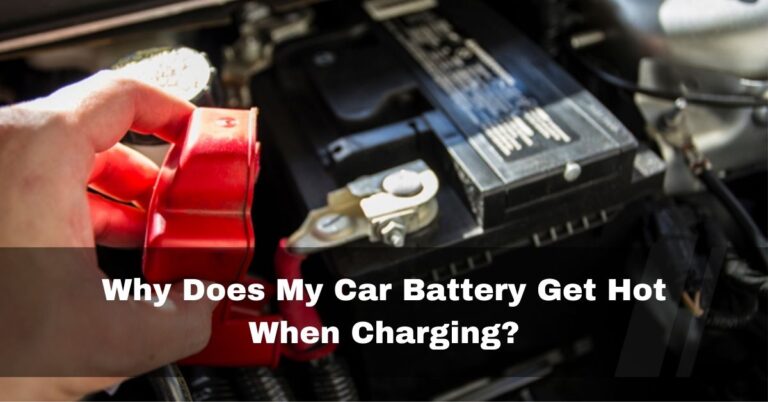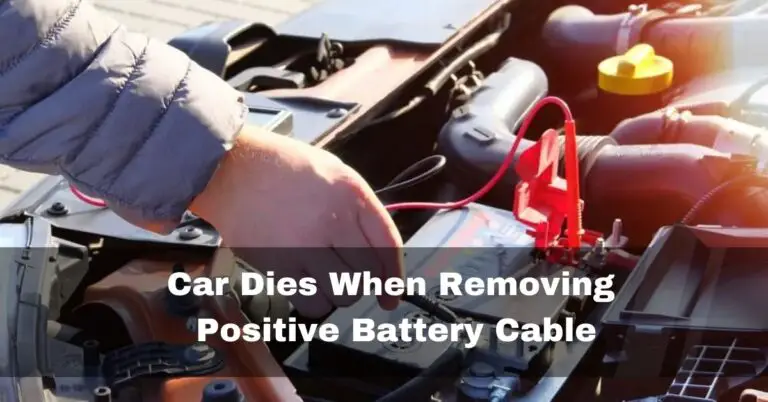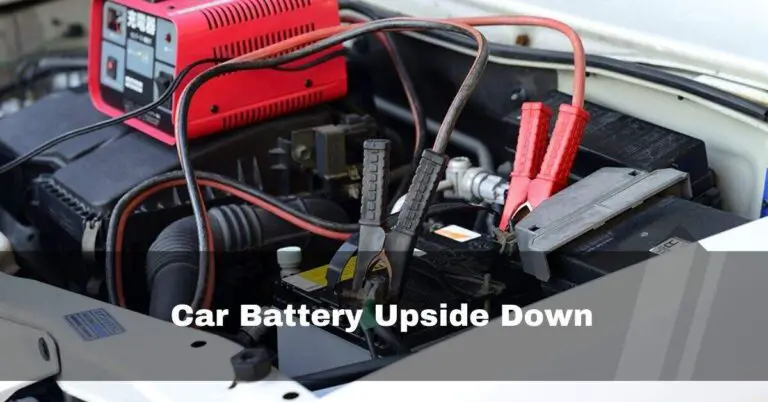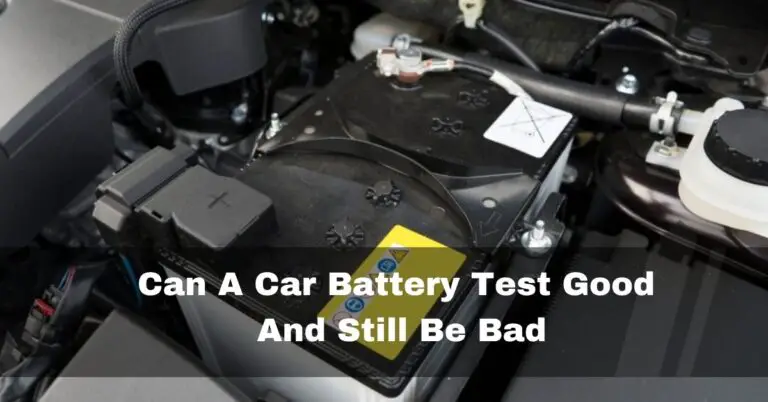The Car Battery Has Voltage But No Amps -Easy Fixes In 2024
Navigating the challenges of car battery problems, particularly issues with voltage but no amps, can be frustrating. From personal experiences, I’ve realized that lacking knowledge of the root causes and effective solutions inconveniences drivers and poses a risk of potential damage to their vehicles.
The Car Battery Has Voltage But No Amps (Short Answer)
Maybe the terminals need to be cleaned. A dead battery, poor contact, a loose connection, a malfunctioning battery cell, an alternator issue, parasitic drain, or high resistance cause it.
We will examine this post’s comprehension of voltage, amps, and potential reasons and fixes.
Table of Contents
Why Car Battery Has Voltage But No Amps And What To Do?
From my own experiences, this issue often stems from various factors that hinder the battery’s ability to deliver the necessary current. Here are some potential reasons:
1. Dying Battery:
Batteries are not designed to last indefinitely. Like anything else, they have a shelf life and will eventually degrade. Your battery is nearing the end of its useful life if it has voltage but no amps—the internal battery plates, the acid, or both, and sulfate, causing the battery to die.

You can determine if your battery is failing by running a load test. You may bring it to any vehicle repair shop, and most of them will load-test your battery at no cost. You can also run a conductivity test to assess your battery’s health instantly.
Also Read: Car Stalling After Battery Change
2. Bad Contact Between Rectifier And Load:
Bad contact between the rectifier and the battery load is another frequent cause of a car battery with voltage but no amps. You must be between the load and the anode bar to determine if this is true. When checking it, if you notice a dip in voltage, you may be sure the connection is bad.
3. Loose Connection:
A loose connection between the battery and the battery terminals may also cause a charged battery that lacks cranking power. A faulty connection might also be caused by the terminal rusting over time.

You can use a multimeter to quickly load test the battery to see if there is a solid connection between the terminals and the battery. Connect the multimeter’s black lead to the terminal and the red lead to the battery post. As you start the automobile, the voltage readout shouldn’t decrease by more than 0.5V.
4. Malfunctioning Battery Cell:
If you still need clarification about why I have voltage but no amps, it can be because the battery has a defective cell. Before starting the car, if the multimeter reads a maximum voltage of 12.4V, your automobile isn’t fully charged, which could result in a bad cell.

By running a hydrometer test on the vehicle, you can determine if you have a defective battery cell. The hydrometer gauges the battery’s internal gravity. Any cell with a value higher than 1.275 indicates the battery is failing.
Also Read: Lightweight Car Battery Daily Driver
5. Defective Alternator:
While the alternator takes over and recharges the battery while the engine operates, the battery still supplies initial power. Even when the battery shows voltage, a weak alternator may not supply enough amperage, draining the battery.

6. High Resistance:
Long-term battery usage might result in high resistance, which lowers the voltage when you start the automobile. This voltage drop results from greater demand for the energy required to start the car, power electrical lighting, and other things.

Also Read: Car Dies When Removing Positive Battery Cable
7. Parasitic Drain:
Even when the engine is off, some electrical parts or accessories in the car may occasionally continue to use power. It may cause the battery to lose power, leaving it with a voltage gradually but a few amps.
How do you fix a car battery that has voltage but no amps?
Addressing a car battery with voltage but lacking amps can be a personal journey of troubleshooting and restoration. Drawing from my own experiences, here’s a personalized approach to tackle this issue:
1. Replace The Battery:
A dying battery can still start your car, but it no longer satisfies the minimum standards for your car, and it could fail at any time, especially in hot climates. Although it might seem optional after a bit, it is advised that you change the battery as soon as you can.
High resistance in a battery is a sign that it will soon run out of power. Replacing the battery in this situation is best to ensure you don’t experience any battery problems shortly.
2. Check Contact Between Rectifier And Load:
You must locate the problem region and repair it if there is a poor connection between the anode rectifier and the load. Your battery can be repaired by doing this.

3. Clean Battery Terminals:
You must clean the battery terminals if they are rusted. Employ a memory saver or a 9V battery connected to the battery terminals to safeguard the car’s computer memory and essential settings. Unplug the battery cables. Create a solution by mixing one cup of warm water with a spoonful of baking soda.
Apply this baking soda solution to the battery connections and posts using a soft bristle brush. Utilize a battery post-cleaning tool to eliminate dust from the posts and terminals. For cleaning the battery’s side terminals, employ a small wired brush.
Once corrosion is removed, wipe the cleaning solution off with a dry rag. Reconnect the terminals to the battery and lightly coat them with petroleum jelly or grease to inhibit future corrosion.
Also Read: How Long Does It Take To Charge A Car Battery At 6 Amps
4. Clean And Inspect Battery Cell:
If they aren’t already clean, you might use a battery conditioner to clean the cells. The battery’s lifespan will be prolonged by a few months before it inevitably expires. The sulfation must be minimal for it to function.
Before looking inside or working on batteries, remember they contain powerful acids, so wear protective gear. While using a conditioner will temporarily lengthen the battery life, replacing the battery is the only long-term fix.
5. Replace Alternator:
A professional diagnosis, alternator repair, or alternator replacement may be necessary.
6. Fix Parasitic Drain:
The problem can be solved by locating and frequently fixing the parasitic drain’s source with a mechanic’s assistance.
Also Read: Why Is My Car Battery Showing 15 Volts
How To Test Car Battery Amps With A Multimeter?
Testing car battery amps with a multimeter is a practical skill that, from personal experience, can empower you to assess your battery’s health. Here’s a personalized guide:
1. Switch On Your Headlights:
Your car’s headlights will dissipate the extra charge and provide an accurate readout once you turn them on. Keep the headlights on for at least 30 seconds before connecting the multimeter to it.

2. Connect The Multimeter:
How to test battery amps? To check the battery voltage, select the multimeter’s DC volts option. The letter “V”—for DC volts—is typically in a multimeter. Testing a car battery with a 20V range is sufficient because it will display the findings between 0V and 20V.
How to test car battery amps with multimeter? Set the multimeter’s dial to 20 DC volts. Connect the black light to the negative battery terminal and the multimeter’s black line to the positive one. That will display the battery voltage reading.
Also Read: Car Battery Clicking While Charging
3. Measure The Reading:
The battery is fully charged if the reading is above 12.6 volts or higher. Before continuing the remaining test stages, you must recharge your battery if it registers less than 12.4 volts. To determine the condition of your battery from the voltage reading, keep the following readings in mind:
- 12.6 Volts or Above – The battery is fully charged.
- 12.4 – 12.6 Volts – Battery is 75% charged.
- 12.2 – 12.4 Volts – Battery is 50% charged.
- 12.0 – 12.2 Volts – Battery is 25% charged.
- 11.9 Volts or Below – Battery is discharged.
4. Power Up The Battery:
If your battery has enough charge, you can skip this one and go straight to the next. However, let’s look at how to recharge your automobile battery if you don’t have enough power.

Use a portable charger to recharge the battery, or take it to a store to get it done. You can also drive the vehicle for at least 30 minutes to recharge the battery. Just starting the engine and letting it idle won’t charge the battery, so keep that in mind. It would help if you operated it.
5. Perform A Load Test:
You can determine if the battery needs to be replaced at this point. You must run this test with a fully charged battery for accurate results. Make sure your battery is charged before conducting this test.
When you start the automobile, the voltage in the battery will decrease to some level. Never, however, should the voltage fall below 9.6V. You’ll need a new auto battery if it drops below 9.6V.

With the multimeter attached, turn the car on. Multimeters have latency, and converting voltage to numbers takes some time. The voltage of the battery drops quickly in just a few microseconds. Therefore, you shouldn’t rely on just checking the multimeter to get accurate results. You need to change the battery because it is faulty if the voltage reading is less than 9.6V.
Also Read: How To Fix Reverse Polarity On A Car Battery
6. Check The Amperage:
You can check the amperage in the battery if there are no problems with the voltage. Each automobile battery has a predetermined CCA (Cold Cranking Amps) reading. A poor automobile battery is also indicated if the amperage reading is too low compared to the CCA.

can a car battery lose cranking amps?
Drawing from my own experiences, I’ve learned that as a car battery undergoes discharge and recharge cycles, the lead-acid chemical reactions within the battery gradually wear out the plates. Over time, this leads to deterioration in the lead components.
As a result of this wear and tear, the battery’s overall capacity diminishes. This reduction in capacity directly impacts the cold cranking amps (CCA) of the battery. Cold-cranking amps refer to the ability of the battery to start the engine in cold temperatures.
Therefore, as the battery loses capacity, it experiences a decline in its cold cranking amps, potentially affecting its efficiency, particularly during colder weather conditions.
Related Questions:
1. Can A Battery Have Good Voltage But Still Be Bad?
When you start the car, a battery’s voltage can drop to less than 9 volts from over 12.6 volts. A car battery could have a good voltage and still be defective.
2. What Voltage Is Too Low For A 12-Volt Battery?
The battery is only fully charged if the voltage is 12.6 V. However, if it falls below 11.9V, the battery has been discharged and must be recharged before you can use it again.
3. How Many Amps Is The Car Battery?
How many amps is a car battery? The typical car battery stores anywhere between 550 and 1,000 amps. This value is called an amp rating. The typical car battery stores anywhere between 550 and 1,000 amps.
4. Why is my battery charged but car has no power?
If your car lacks power despite a fully charged battery, the most likely culprit is a poorly connected or disconnected battery cable. A bad connection or corrosion within the cable insulation could hinder the power flow.
5. Can battery be fully charged but not working?
A fully charged battery doesn’t necessarily guarantee its effectiveness. Even at 75% or 100% charged, a battery might be on the brink of failure, akin to a cracked glass filled with water.
6. What causes sulfation in a car battery?
Sulfation occurs over time as lead-acid batteries undergo discharge-recharge cycles. It results in the formation of sulfate deposits on the battery plates, impacting its capacity to deliver amps.
7. Can a bad alternator cause a car battery to have voltage but no amps?
Yes, a faulty alternator can contribute to a situation where the battery shows voltage but lacks amps. A malfunctioning alternator may fail to recharge the battery properly, leading to diminished amp capacity.
8. How often should I test my car battery for voltage and amps?
Regular testing is advisable, especially before extreme weather conditions or long trips. Conducting tests every six months or during routine vehicle maintenance can help identify potential issues early.
9. How long does it take for sulfation to affect a car battery’s amp capacity?
Sulfation develops gradually over time, depending on factors like usage patterns and charging habits. Regular battery maintenance and prompt addressing of sulfation can help preserve amp capacity.
10. How do I know if my cranking battery is bad?
If you notice sluggish cranking during engine startup, especially on cold mornings or inconsistent starts, your cranking battery may be in trouble. When starting your vehicle, pay attention if you experience no sound or interior lights.
Conclusion:
It can be confusing to come across situations where a car battery has voltage but no amps. The diagnosis and solution of the issue depend on understanding the differences between voltage and amperage. Finding the underlying reason is the first step in finding a remedy, regardless of whether a dead battery, poor contact, a loose connection, a malfunctioning battery cell, an alternator issue, a parasitic drain, or high resistance causes it.
Also Read:
- Car Battery Reads 13 Volts But Won’t Start
- Car Battery Smoking When Jumping
- Does Car Battery Affect Air Conditioning
- Car Battery Voltage Low When Running
References:
- https://community.cartalk.com/t/12v-battery-reads-good-voltage-but-no-amps/
- https://www.quora.com/Can-a-battery-show-good-voltage-but-not-be-able-to-start-the-engine-of-the-vehicle
- https://www.205gtidrivers.com/forums/topic/135229-battery-seems-dead-but-showing-12v/
- https://www.reddit.com/r/MechanicAdvice/comments/mpjlwj/til_that_a_battery_can_have_127_v_and_no_amperage/
- https://electronics.stackexchange.com/questions/485083/enough-voltage-but-no-current

